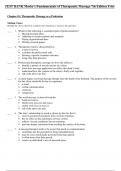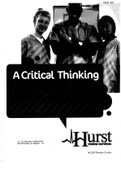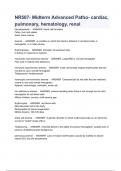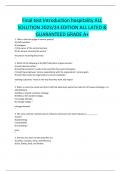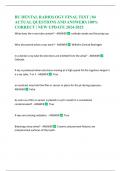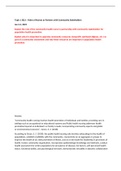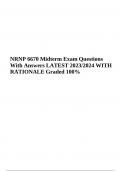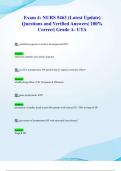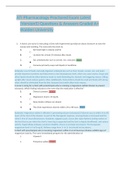Tentamen (uitwerkingen)
Test Bank For Mosby's Fundamentals of Therapeutic Massage 7th Edition by Sandy Fritz, Luke Fritz
- Vak
- Instelling
Test Bank Mosby's Fundamentals of Therapeutic Massage 7th Edition by Sandy Fritz, Luke Fritz ISBN: 9780323661836. Mosby's Fundamentals of Therapeutic Massage 7e test bank.
[Meer zien]
